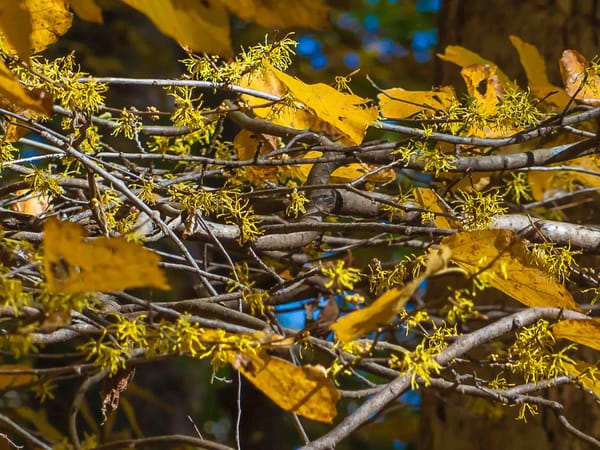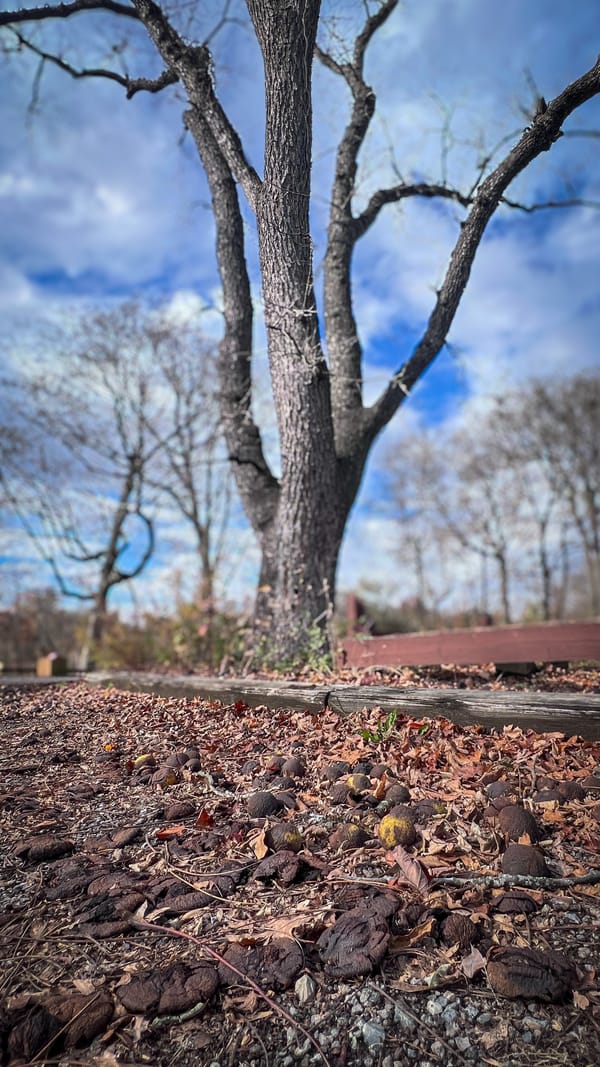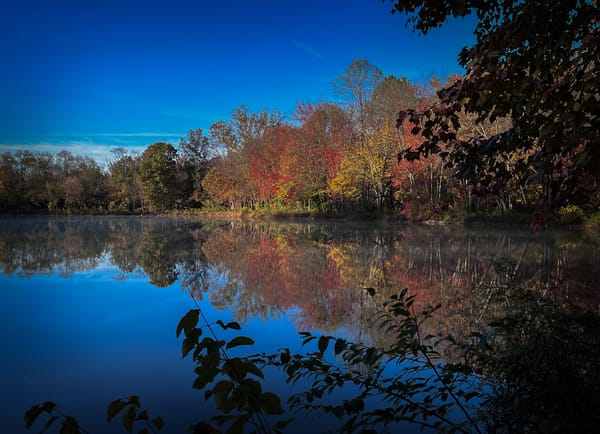Skippers
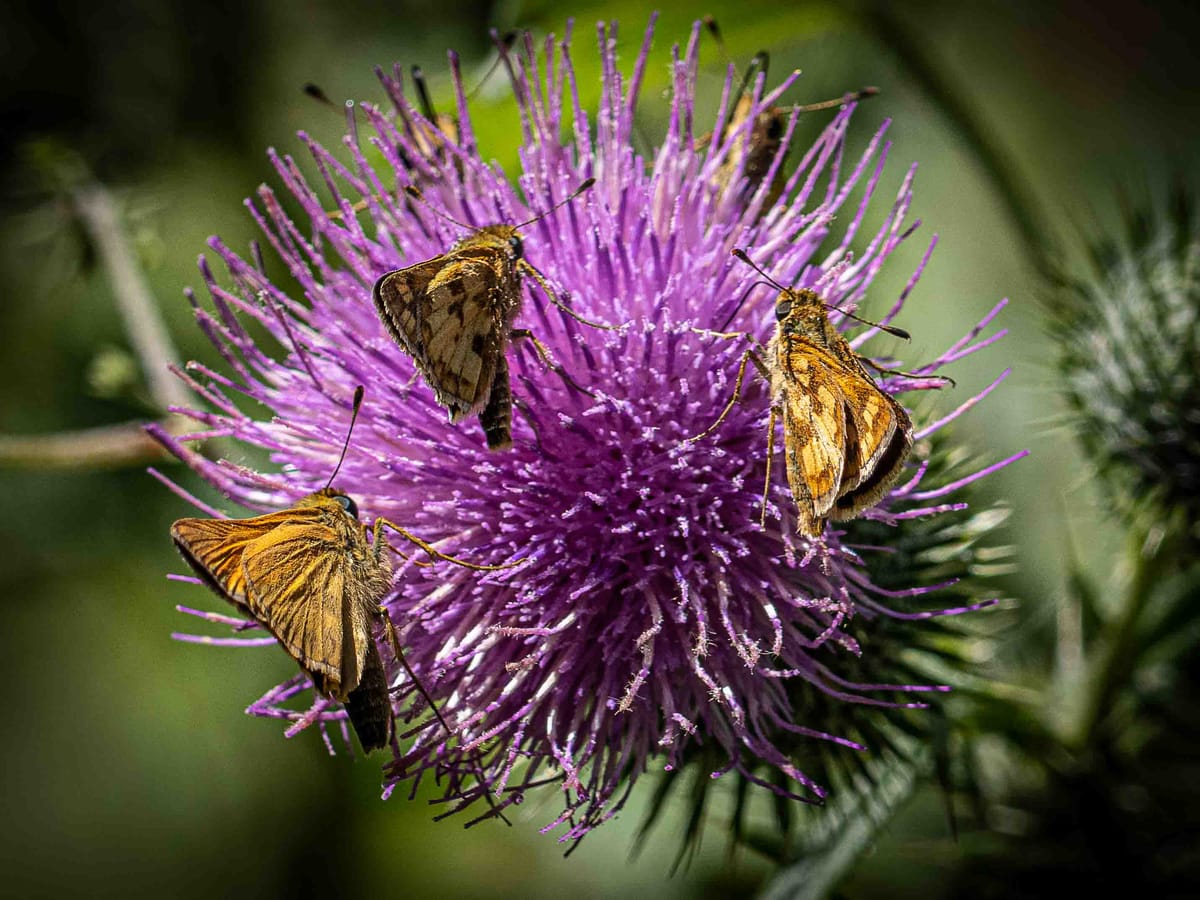
Of the thirty or so species of butterflies I have observed at the park the most common by far are the stout-bodied medium-sized family of Skippers. These mostly orange butterflies get their common name because they fly erratically, skipping from place to place.
At first I thought skippers were moths. While both butterflies and moths are members of the order Lepidoptera butterflies generally have clubbed antennae, rest with their wings held vertically, and form a chrysalis. Moths generally have feathery antennae, rest with their wings open, and spin a silk cocoon.
The earliest lepidoptera (originating about 300 million years ago) were nocturnal moth-like insects. Butterflies, really just a group of day-flying moths, evolved from their nocturnal cousins roughly 100 million years ago.
Identifying the exact species of skippers can be a challenge, but it's reasonably easy to determining which of three groups present at the park you are observing. Getting a picture of them will certainly help in further refining your identification.
I've included a dichotomous key at the end of this post to make identification (hopefully) simpler.
Here are the nine most commonly sighted species of skippers, listed in order of how often they are seen:
- Huron Sachem (Atalopedes huron)
- Least Skipper (Ancyloxypha numitor)
- Zabulon Skipper (Poanes zabulon)
- Peck's Skipper (Polites peckius)
- Silver-spotted Skipper (Epargyreus clarus)
- Fiery Skipper (Hylephila phyleus)
- Wild Indigo Duskywing (Erynnis baptisiae)
- Common Checkered-Skipper (Burnsius communis)
- Dun Skipper (Euphyes vestris)
The three groups are listed below -
Spread-wing Skipper Group
Subfamily Pyrginae typically rest with their wings held open and flat. These are the least common two species I've observed at the park.
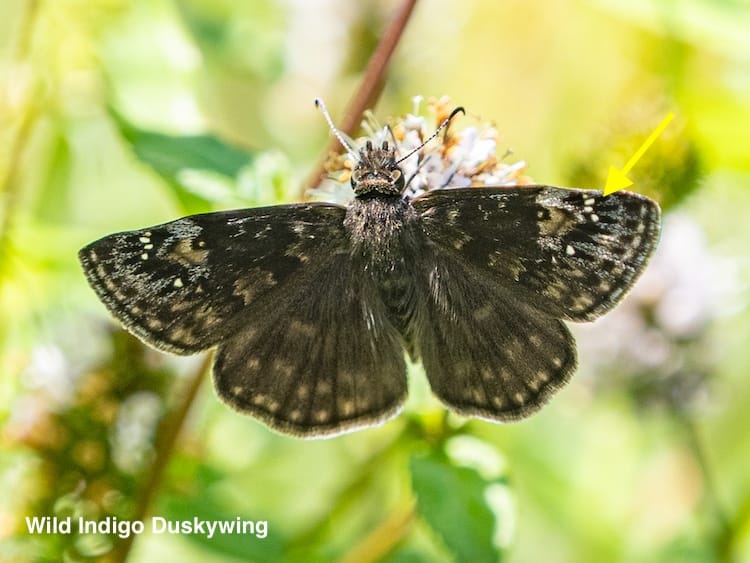
Wild Indigo Duskywing (Erynnis baptisiae)
I've only spotted this skipper a handful of times, it's much darker than the others, rests with it's wings flat, and has the white markings at the top outside of the forewing indicated by the arrow. It's not likely you'll confuse it with another skipper. Duskywing species are very difficult to tell apart, and the males and females are almost identical.
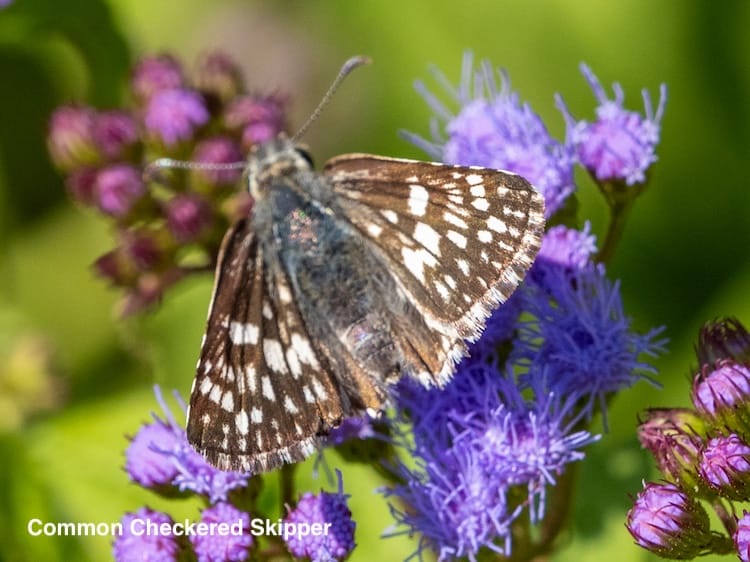
Common Checkered-Skipper (Burnsius communis)
I've seen this skipper one time as of this writing, the distinctive pattern plus the flat resting position of the wings make it easy to identify.
Dicot Skipper Group
Subfamily Eudaminae often rest with their wings folded over their backs like most butterflies.
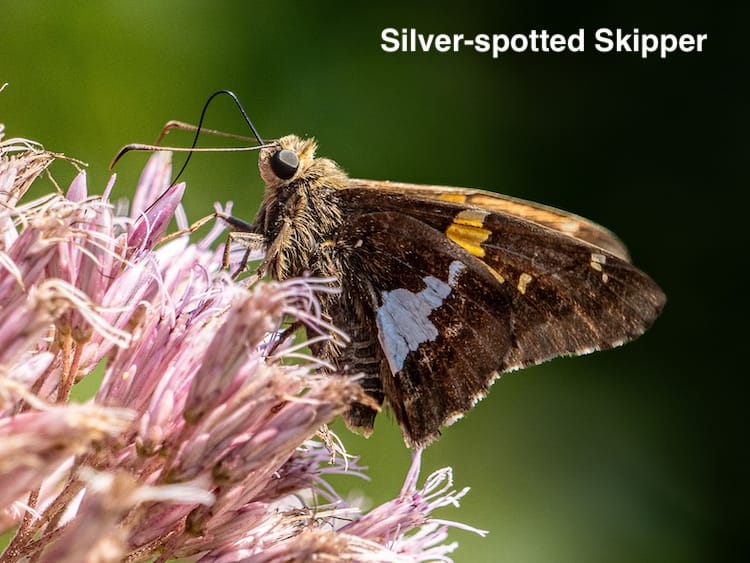
Silver-spotted Skipper (Epargyreus clarus)
The single member of the Dicot family I've observed at the park. The prominent silver (often more white than silver) spot on the hindwing and the wings held over the back make this species unmistakable. Males and female silver-spotted skippers are nearly identical
Grass Skipper Group
Subfamily Hesperiinae usually hold their forewings in a V-shape and their hindwings flat when at rest; known at the "jet fighter" orientation. These are the most common group of skippers at the park.
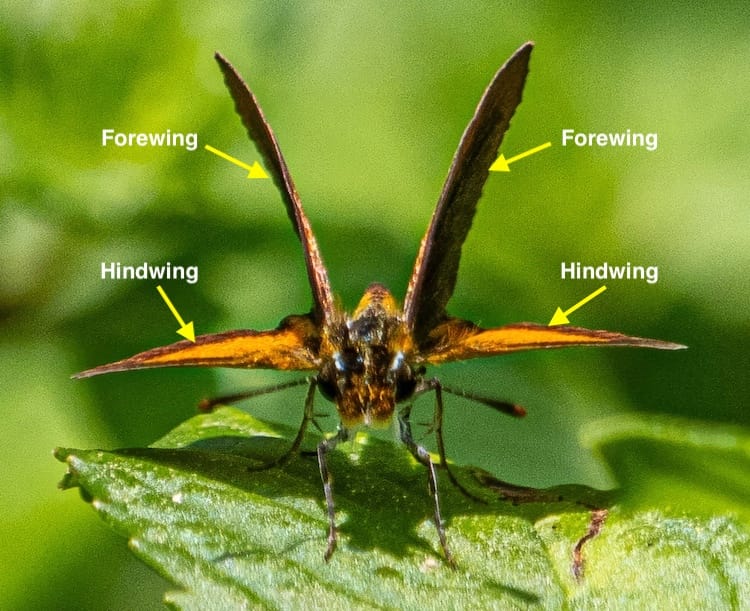
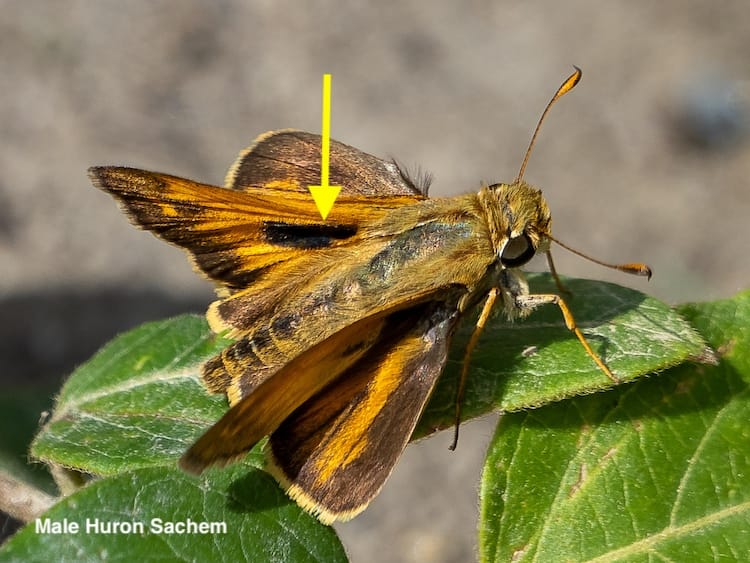
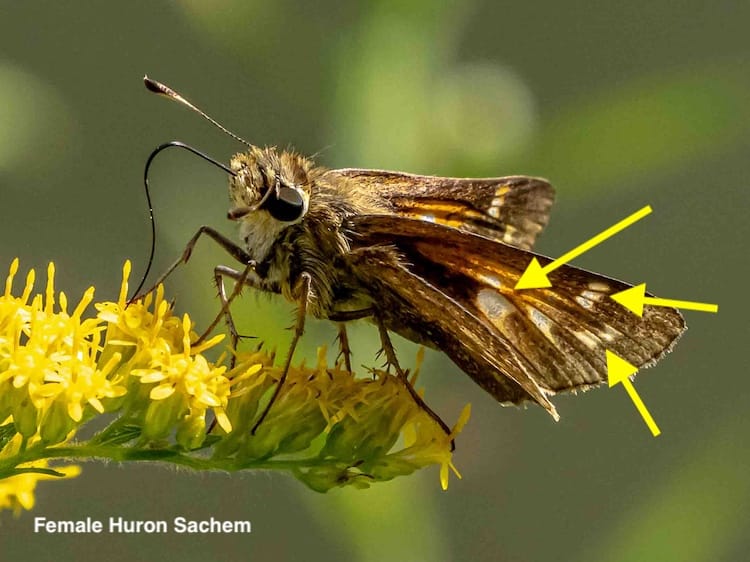
Huron Sachem (Atalopedes huron)
The male has a dark spot (stigma) and the female a pattern of white spots on the forewings. This migratory species breeds in Pennsylvania but over-winters farther south. The very different markings of the male and female make them look almost like a different species.
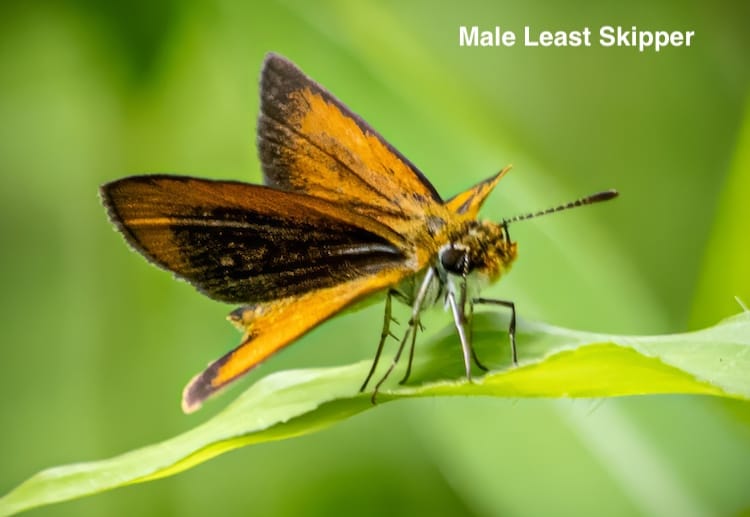
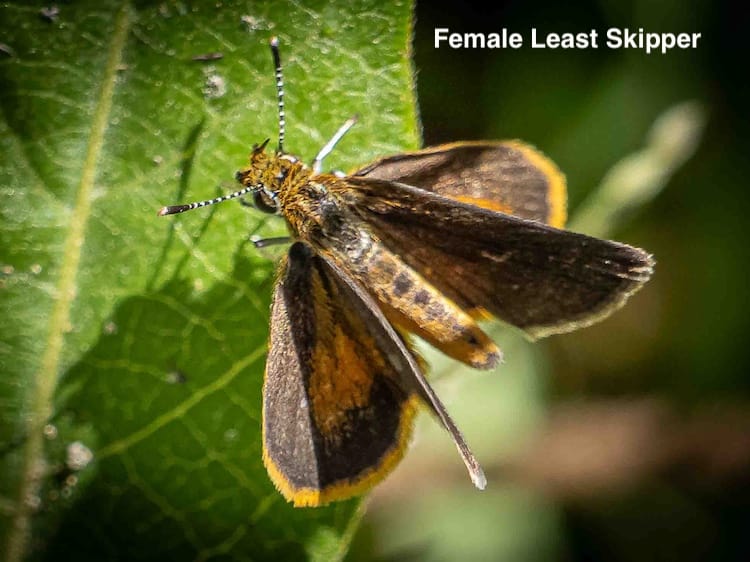
Least Skipper (Ancyloxypha numitor)
The smallest skipper, only half the size of the other skippers at the park. The males have more orange and the females have more dark brown bordering the wings. Both have white bellies.
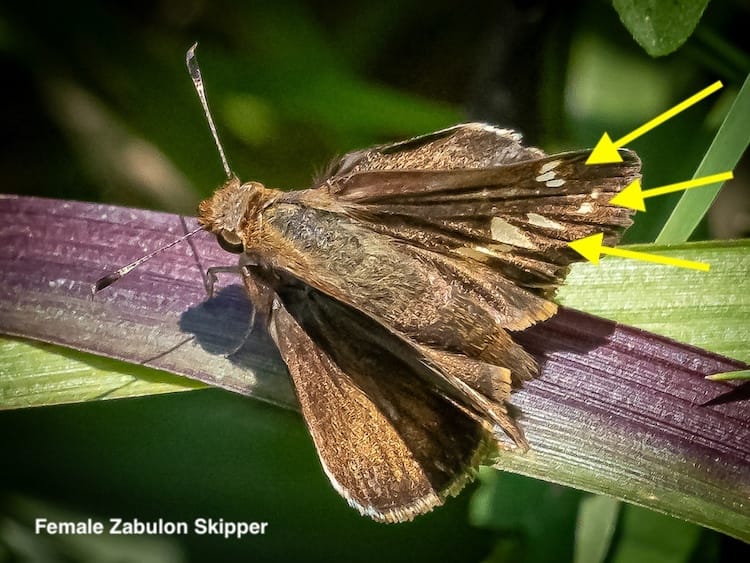
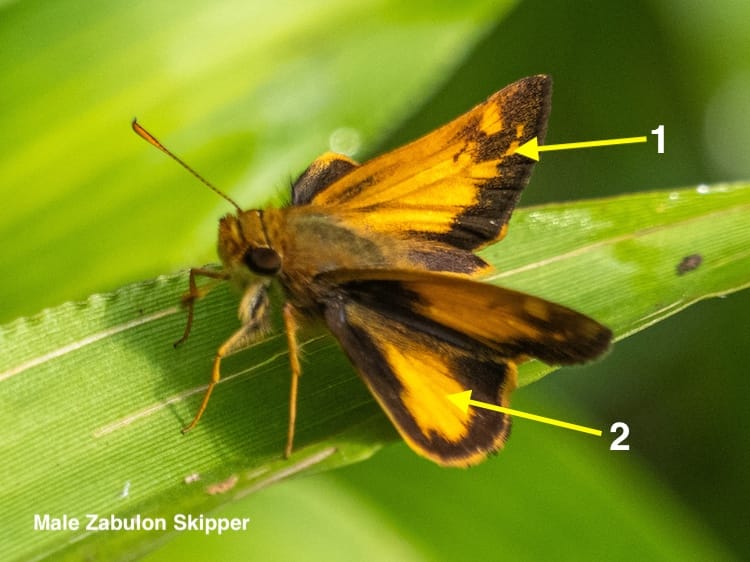
Zabulon Skipper (Poanes zabulon)
Males have a more or less geometric pattern on the forewing (1) and a single large orange area on the hindwing (2) with no black veins dividing it.
Females are darker with a geometric pattern of white spots on the forewing
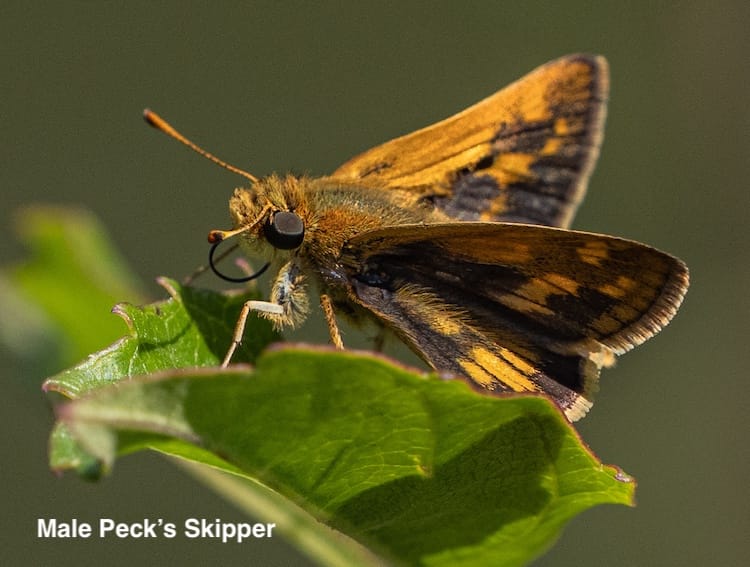
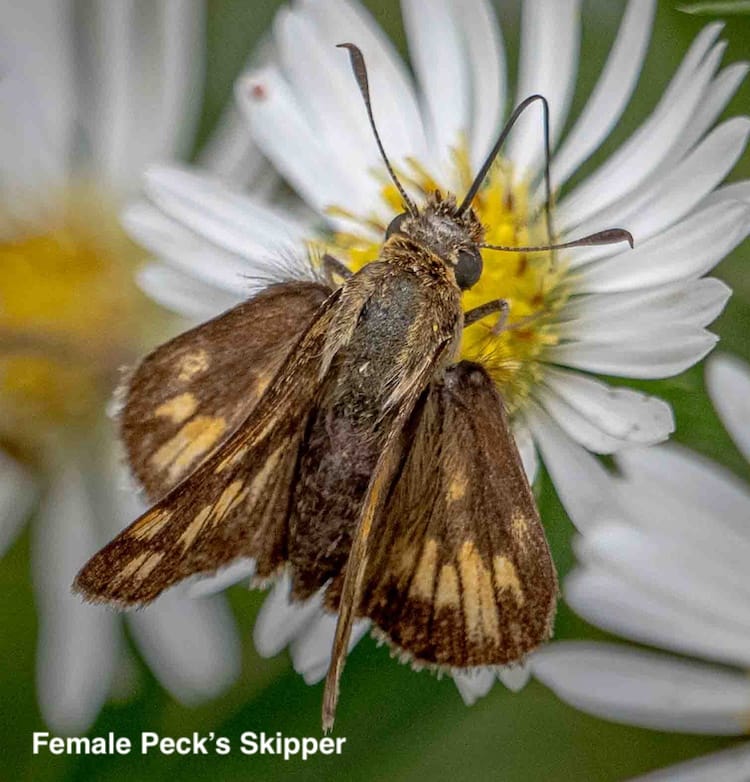
Peck's Skipper (Polites peckius)
The male is brighter and both sexes have geometric patterns on both the hind and fore wings. The pattern on both sets of wings makes the Peck's skipper different from other skippers you'll find at the park.
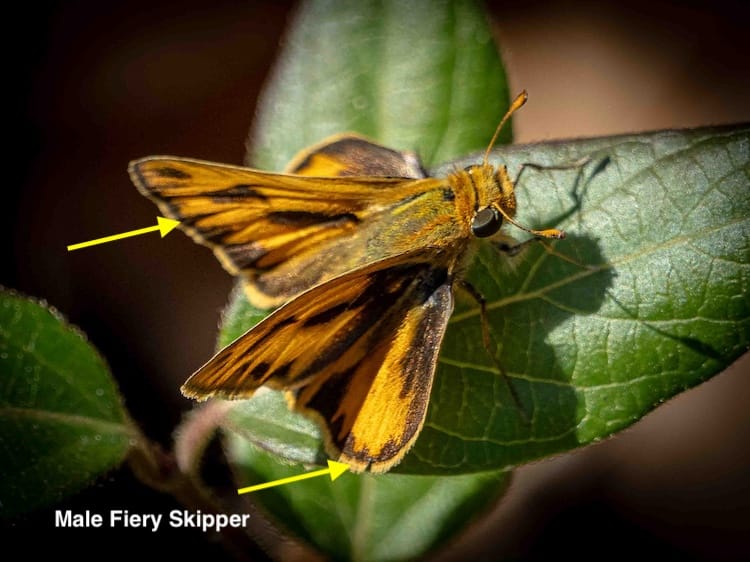
Fiery Skipper (Hylephila phyleus)
The male Fiery Skipper has a jagged black border on it's bright orange fore and hind wings. Females are a almost the male pattern reversed, few geometric orange markings on a filed of dark brown. (I have yet to get a picture of the female Fiery Skipper.)
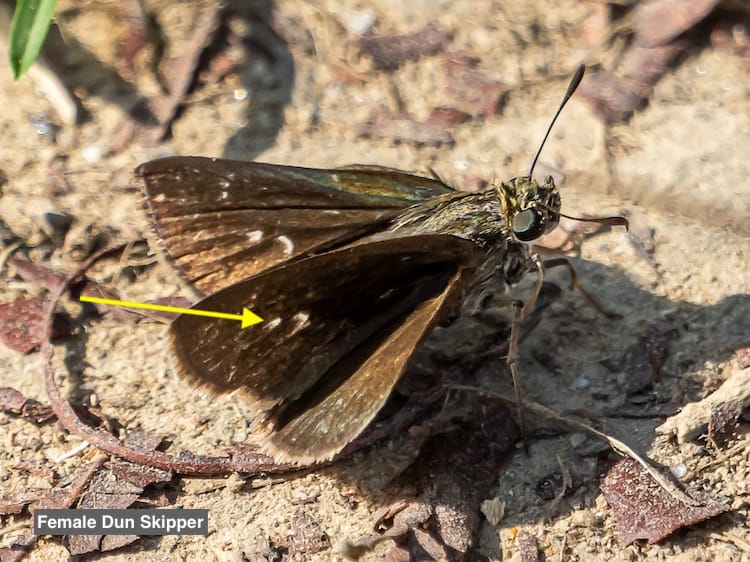
Dun Skipper (Euphyes vestris)
I've only spotted the Dun Skipper once at the park, females have a few white spots against brown hind and fore wings. Males are solid brown with no white markings.
I've created a dichotomous key to aid in identifying skippers at Anson B. Nixon Park.
Dichotomous Key - Skippers at Anson B. Nixon Park
1. Wings are held open and flat at rest
1. Wings are held vertically over the back or in a "jet fighter" orientation
Group 2 (Spread-wing Skippers)
2. Wings are dark with white markings at the top outside of the forewing
Wild Indigo Duskywing (Erynnis baptisiae)
2. Wings have a distinctive checkered pattern
Common Checkered-Skipper (Burnsius communis)
Group 3 (Dicot & Grass Skippers)
3. Wings are held vertically over the back and have a prominent silver or white spot on the hindwing
Silver-spotted Skipper (Epargyreus clarus)
3. Wings are held in a "jet fighter" orientation
Group 4 (Grass Skippers)
4. Skipper is half the size of other skippers
Least Skipper (Ancyloxypha numitor)
4. Skipper is of medium size
Group 5 (Medium-sized Grass Skippers)
5. Wings are solid brown with no white markings (male) or have a few white spots (female)
Dun Skipper (Euphyes vestris)
5. Wings have geometric patterns or markings
Group 6 (Patterned Grass Skippers)
6. Male has a dark spot (stigma) and female has a pattern of white spots on the forewings
Huron Sachem (Atalopedes huron)
6. Both sexes have geometric patterns or markings on their wings, not just a single spot
Group 7 (Complex Pattern Grass Skippers)
7. Wings have geometric patterns on both the hind and forewings
Peck's Skipper (Polites peckius)
7. Geometric patterns are primarily on the forewing, or the hindwing is a single color
Group 8 (Final Distinction)
8. Male has a jagged black border on bright orange wings, female has few geometric orange markings on a dark brown background
Fiery Skipper (Hylephila phyleus)
8. Male has a geometric pattern on the forewing and a single large orange area on the hindwing; female is darker with a geometric pattern of white spots on the forewing
Zabulon Skipper (Poanes zabulon)

